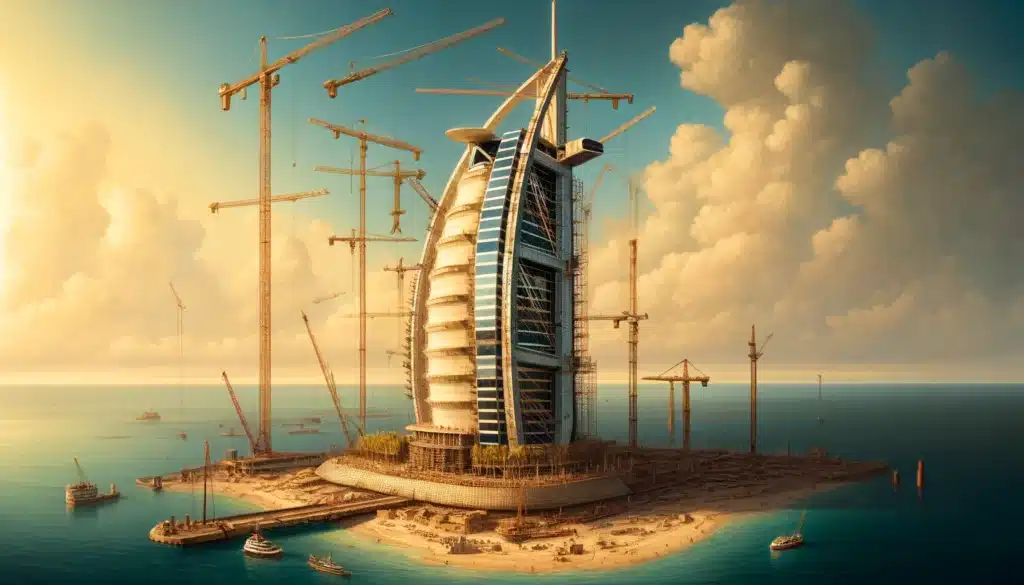Few transformations rival the extraordinary story of Dubai Then and Now. This emirate morphed from a modest pearling village into a gleaming global metropolis within mere decades. The journey spans desert winds and towering cranes, dhow sails and jet engines, pearl divers and tech entrepreneurs.
Walking through modern Dubai feels surreal when you consider its humble origins. Fifty years ago, camels wandered where skyscrapers now pierce clouds. Traditional wind towers cooled homes where air-conditioned towers now house millions. The contrast captures something profound about human ambition and vision.
The Pearl Diving Era: Life Before Skyscrapers
Dubai’s story begins with pearl divers who risked everything beneath Gulf waters. These brave souls descended without oxygen tanks, clutching weighted stones. They held their breath for minutes, hunting oysters in depths reaching thirty metres.
Pearl diving shaped Dubai’s soul in ways money cannot replicate. Crews sang traditional sea shanties whilst rowing dhows across moonlit waters. Mothers prayed on shore as sons disappeared for months-long expeditions. Communities gathered each diving season, blessing departing boats with dates and prayers.
The industry employed thousands across the emirate. Divers earned shares of each expedition’s profits. Captains navigated by stars and wind patterns. Merchants in the Creek souqs traded pearls to buyers from Bombay, Paris, and beyond.
But pearl diving was dangerous work. Sharks stalked the beds. Strong currents swept divers away. Many never returned home. Yet families continued this tradition because pearls brought prosperity to otherwise harsh desert conditions.
The 1930s brought catastrophe. Japan’s cultured pearls flooded global markets. The Great Depression killed luxury demand overnight. Dubai’s pearl industry collapsed completely. Families faced starvation as their primary income vanished.

Sheikh Rashid’s Vision: Oil Discovery Changes Everything
Everything shifted in 1966 when geologists struck oil at the Fateh field. Black gold spurted from beneath desert sands, promising unimaginable wealth. Yet Sheikh Rashid bin Saeed Al Maktoum demonstrated remarkable foresight.
“My grandfather rode a camel, my father rode a camel, I drive a Mercedes, my son drives a Land Rover, his son will drive a Land Rover, but his son will ride a camel,” he famously warned. The message was clear: oil wealth must fund lasting diversification.
Sheikh Rashid invested oil revenues in infrastructure rather than luxury. Roads connected remote villages. Desalination plants provided fresh water. Schools educated Emirati children for the first time. Hospitals treated diseases that previously meant death.
The Dubai World Trade Centre opened in 1979, inaugurated by Queen Elizabeth II herself. At thirty-nine storeys, it towered above everything else. Sceptics called it “Rashid’s Folly,” questioning why anyone needed such height in the desert.
History proved the Sheikh right. That lonely skyscraper became the first domino in Dubai’s vertical transformation. International businesses established regional headquarters there. Conferences brought global executives to Dubai for the first time.
The Creek remained Dubai’s beating heart throughout this period. Traditional dhows still carried goods to Iran and India. Spice souqs perfumed narrow alleyways. Gold merchants displayed fortunes in shop windows. Heritage coexisted beautifully with progress.
Strategic Location: The Geographic Advantage
Dubai’s success story cannot ignore geography. The emirate sits perfectly between Europe, Asia, and Africa. Ships crossing the Indian Ocean naturally stop here. Planes flying east or west refuel at Dubai International.
The Creek provided natural harbour protection for centuries. Merchants from Persia, India, and East Africa established trading posts along its banks. They brought spices, textiles, and precious metals. They carried away pearls, dates, and frankincense.
Dubai’s rulers recognised this advantage early. They abolished import taxes when neighbouring ports charged heavy duties. Free trade policies attracted merchants who might otherwise choose Basra, Kuwait, or Bombay.
Emirates Airline’s launch in 1985 maximised geographic advantages. Two Boeing 737s connected Dubai to regional destinations. Within decades, the carrier became the world’s largest international airline. Today it links Dubai to over 150 cities across six continents.
Jebel Ali Port exploited Dubai’s maritime position brilliantly. Completed in 1979, it became the region’s largest container terminal. Ships dock here between Europe and Asia, transferring cargo efficiently. The port handles millions of containers annually.

The Tourism Revolution: Building Dreams in Sand
Tourism transformed Dubai from regional hub into global destination. Luxury hotels dotted Jumeirah Beach by the 1980s. The Burj Al Arab, shaped like a billowing sail, opened in 1999. Its helicopter landing pad and underwater restaurant redefined hospitality.
Shopping became tourism entertainment. Dubai Shopping Festival launched in 1996, offering discounts, prizes, and cultural events. Families flew from across the region specifically to shop. Malls evolved into entertainment complexes with cinemas, ice rinks, and aquariums.
Golf courses bloomed in the desert, defying nature and logic. The Emirates Golf Club hosted international tournaments. Tiger Woods and other legends played where Bedouins once roamed. Green fairways required massive desalination and irrigation, yet attracted millions of visitors.
Dubai’s beaches became playground for the wealthy. Beach clubs offered champagne brunches and infinity pools. Water sports companies provided jet skis, parasailing, and deep-sea fishing. Desert safari tours let visitors experience Bedouin culture safely.
The city marketed itself brilliantly. “Definitely Dubai” campaigns ran globally. Celebrity endorsements brought Hollywood glamour. International events like tennis championships and horse racing attracted global media coverage.
Cultural tourism developed alongside luxury offerings. The Al Fahidi Historical Neighbourhood preserved traditional architecture. Museums showcased Emirati heritage. Cultural centres hosted Arabic poetry, traditional music, and folk dancing.
Megaproject Mania: Redefining Possible
The 2000s unleashed Dubai’s most audacious projects. Palm Jumeirah became the world’s largest man-made island. Shaped like a palm tree, it added 500 kilometres of premium coastline. Luxury villas sold for millions before construction finished.
The World Islands project aimed to recreate Earth’s continents in miniature. Each island represented a different country. Private buyers could own entire nations in Dubai’s waters. Though the project faced delays, it demonstrated limitless ambition.
Downtown Dubai rose around the Burj Khalifa, the world’s tallest building. At 828 metres, it pierces the sky like a modern Tower of Babel. Its opening ceremony featured spectacular fountain shows and global media coverage.
Dubai Mall became shopping elevated to art form. With 1,200 stores, it attracts 100 million visitors annually. The Dubai Aquarium houses thousands of marine species. An Olympic-sized ice rink hosts international competitions. Fashion weeks showcase global designers.
These projects created employment for millions. Construction workers arrived from across Asia and Africa. Engineers designed impossible structures. Architects pushed creative boundaries. Service industries exploded to support growing populations.
Real estate speculation reached fever pitch. Property values doubled yearly. Cranes filled the skyline like mechanical forests. Everyone seemed to profit from endless construction.
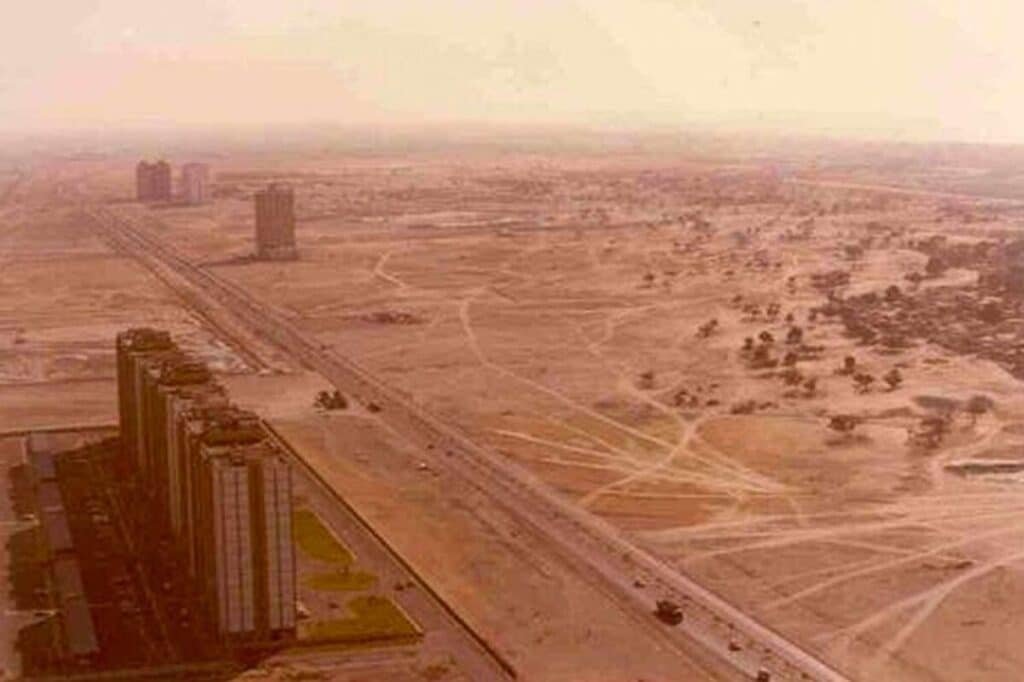
Cultural Crossroads: When Worlds Collide
Modern Dubai hosts over 200 nationalities in remarkable harmony. Walking through Deira feels like travelling the world within minutes. Indian restaurants serve authentic curries. Filipino communities celebrate traditional festivals. European expatriates enjoy familiar cafes and pubs.
The Creek Gold Souq still gleams with treasures from across continents. Indian traders display intricate jewellery. Iranian merchants offer precious gems. Lebanese artisans craft bespoke pieces. Haggling remains essential sport here.
Spice Souq aromas transport visitors across time and geography. Saffron from Kashmir perfumes the air. Cardamom from Guatemala fills wooden sacks. Frankincense from Oman burns in traditional burners. These scents connected Dubai to trade routes for centuries.
Friday brunches became Dubai’s social institution. Hotels compete with elaborate buffets featuring global cuisines. Families gather for hours, sampling everything from sushi to shawarma. These events blend cultures beautifully.
Religious tolerance flourishes impressively. Churches, temples, and gurdwaras operate freely alongside mosques. Christmas celebrations happen publicly. Diwali lights illuminate neighbourhoods. Ramadan brings respectful observance from all communities.
International schools teach diverse curricula. British, American, Indian, and French systems operate side by side. Children grow up multilingual and culturally aware. This educational diversity produces remarkably global citizens.
Economic Evolution: Beyond Oil Dependency
Dubai successfully weaned itself from oil dependency decades before reserves depleted. Today, oil contributes less than 1% to GDP. Trade, tourism, finance, and real estate drive economic growth instead.
Dubai International Financial Centre established the emirate as regional banking hub. Global banks opened Middle East headquarters here. Islamic finance found modern expression. Cryptocurrency trading gained regulatory approval.
Free zones multiplied across the emirate. Jebel Ali Free Zone pioneered the model with tax exemptions and 100% foreign ownership. Media City attracted international broadcasters. Internet City housed technology giants. Healthcare City provided medical expertise.
Aviation became economic cornerstone. Dubai International Airport handles over 90 million passengers annually. Dubai World Central will eventually become the world’s largest airport. The aviation sector employs hundreds of thousands directly and indirectly.
Logistics and re-export trade capitalised on geographic advantages. Goods arrive from manufacturing centres, gain value-added processing, then continue to final destinations. Dubai’s ports and airports serve as global distribution centres.
Real estate provides substantial employment and investment returns. Construction, facilities management, and related services employ millions. Property development continues expanding into new areas and market segments.

Challenges and Adaptations: Learning Through Adversity
The 2008 global financial crisis tested Dubai’s resilience severely. Property prices crashed 50%. Major developers faced bankruptcy. Dubai World required restructuring assistance from Abu Dhabi. Confidence shattered temporarily.
Recovery demonstrated remarkable adaptability. Debt restructuring proceeded methodically. Property laws tightened to prevent speculation bubbles. Economic diversification accelerated further. Lessons learned strengthened future planning.
Environmental challenges demand constant attention. Water scarcity requires massive desalination capacity. Extreme summer heat strains electricity grids. Air quality suffers during peak construction periods. Climate change threatens coastal developments.
Sustainability initiatives address these challenges proactively. Mohammed bin Rashid Al Maktoum Solar Park will generate 5,000 megawatts by 2030. Green building codes mandate efficiency standards. Public transportation expansion reduces car dependency. Recycling programmes grow steadily.
Competition intensifies from regional rivals. Saudi Arabia’s NEOM project promises futuristic development. Qatar’s World Cup boosted global profile. Istanbul leverages European-Asian connections. Dubai responds by enhancing competitive advantages continuously.
Social integration challenges persist despite general harmony. Income inequality creates parallel societies. Cultural misunderstandings occasionally cause friction. Balancing tradition with modernity requires constant calibration.rj Khalifa, and the Heart of Europe Islands, offering underwater villas and climate-controlled streets.
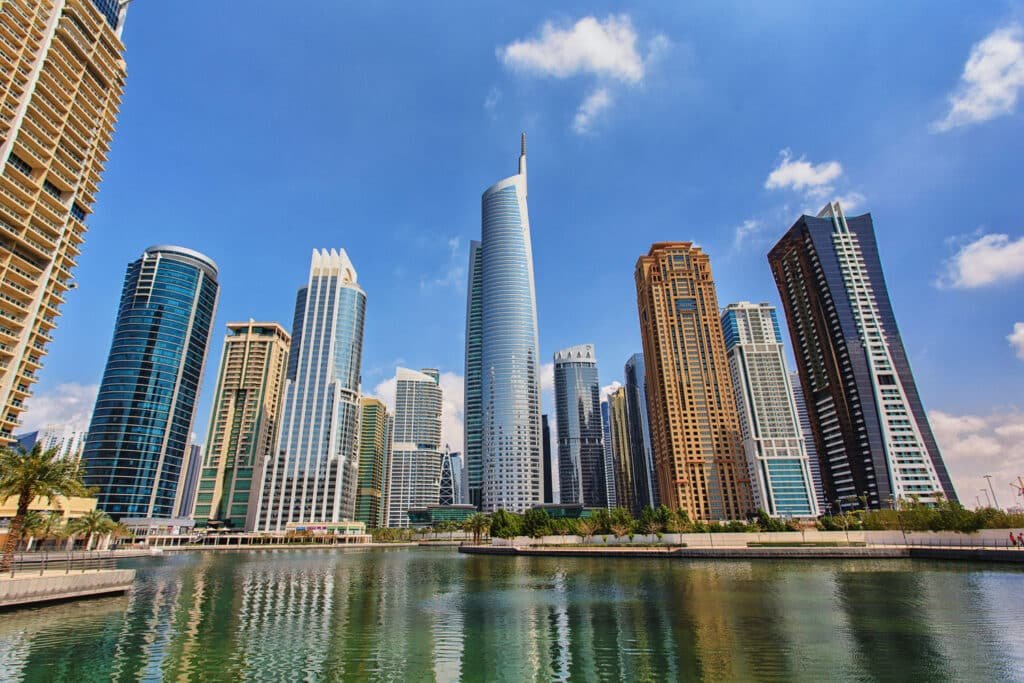
Innovation Hub: Future-Focused Leadership
Dubai positions itself as regional innovation leader through forward-thinking policies. The Dubai Future Foundation coordinates strategic initiatives. Government services went completely paperless by 2021. Blockchain adoption leads globally in several sectors.
Artificial intelligence integration accelerates across industries. Smart traffic management reduces congestion. Predictive policing prevents crime. Healthcare AI diagnoses diseases earlier. Education platforms personalise learning experiences.
Fintech development attracts global startups. Regulatory sandboxes allow experimentation safely. Cryptocurrency exchanges operate legally. Digital payment systems gain widespread adoption. Islamic fintech combines tradition with innovation.
Space exploration captures global imagination. Mars Science City simulates life on the Red Planet. The UAE Space Agency launches ambitious missions. Schools emphasise STEM education. Young Emiratis pursue aerospace careers.
Clean energy investments position Dubai for post-carbon futures. Solar farms generate increasing electricity percentages. Electric vehicle infrastructure expands rapidly. Green hydrogen projects begin development. Carbon neutrality targets drive policy decisions.
Smart city initiatives enhance quality of life. IoT sensors monitor everything from air quality to traffic flows. Mobile apps provide seamless government services. Digital twins model urban systems. Citizens engage through technology platforms.

Preserving Heritage: Honouring the Past
Despite rapid modernisation, Dubai carefully preserves cultural heritage. The Al Fahidi Historical Neighbourhood maintains traditional architecture. Museums showcase pre-oil lifestyles. Traditional crafts receive government support.
Heritage villages demonstrate historical ways of life. Visitors experience pearl diving techniques, traditional fishing methods, and desert survival skills. Elderly Emiratis share oral histories with younger generations.
Traditional festivals continue alongside modern celebrations. Ramadan maintains spiritual significance despite commercial pressures. Eid celebrations blend family traditions with contemporary entertainment. National Day honours founders whilst embracing progress.
Arabic language promotion ensures cultural continuity. Schools mandate Arabic instruction. Media content includes Arabic programming. Literature festivals celebrate regional writers. Poetry competitions honour traditional verse forms.
Traditional architecture influences modern design. Wind towers inspire contemporary cooling systems. Courtyard layouts appear in modern developments. Local materials feature in prestigious buildings. Islamic geometric patterns decorate public spaces.
Falconry and camel racing preserve Bedouin traditions. Competitions attract international participants. Young Emiratis learn ancestral skills. These sports maintain connections to desert heritage whilst embracing modern technology.
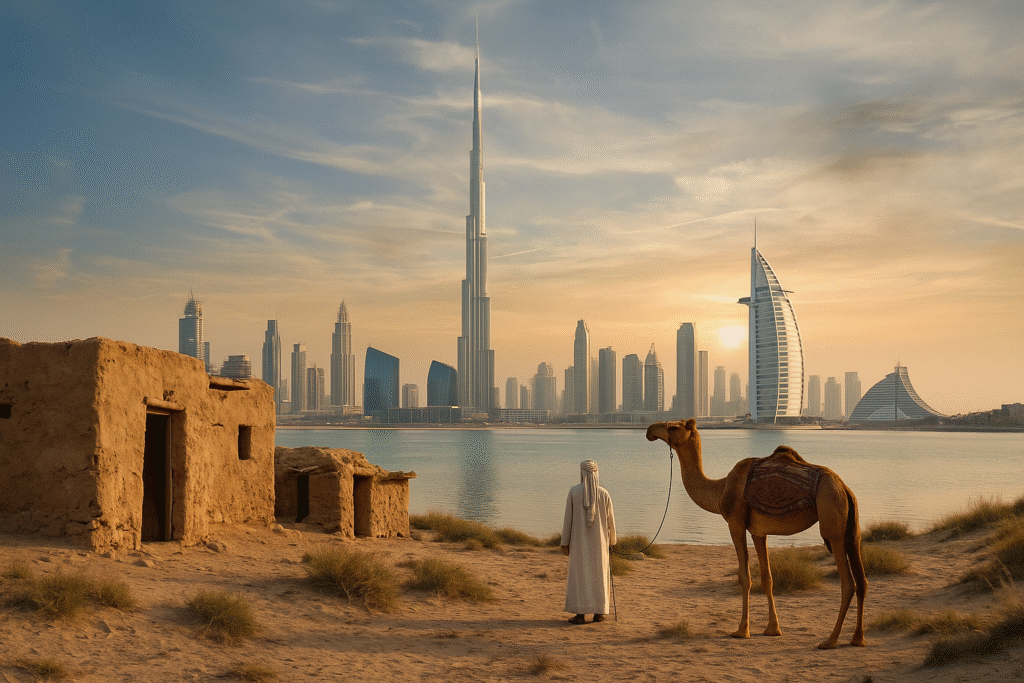
Global Connections: Diplomatic and Cultural Influence
Dubai’s soft power extends far beyond business and tourism. Cultural diplomacy builds bridges across civilisations. The emirate hosts peace conferences, interfaith dialogues, and humanitarian summits.
Dubai Expo 2020 demonstrated convening power magnificently. Despite pandemic challenges, 192 countries participated. Over 24 million visitors experienced cultures, innovations, and ideas. The legacy continues through Expo City Dubai development.
International organisations establish regional headquarters here. The World Bank, United Nations agencies, and multinational corporations coordinate regional operations from Dubai. This concentration amplifies diplomatic influence.
Cultural exports spread globally. Emirati cuisine gains international recognition. Fashion designers showcase traditional-modern fusion. Films explore Gulf stories for global audiences. Music blends Arabic traditions with contemporary sounds.
Educational partnerships connect Dubai globally. International universities establish campuses here. Student exchanges bring global perspectives. Research collaborations address regional challenges. Academic conferences attract scholars worldwide.
Humanitarian leadership enhances global standing. The UAE provides disaster relief globally. Refugee assistance programs support displaced populations. Medical missions serve communities worldwide. These efforts build international goodwill consistently.
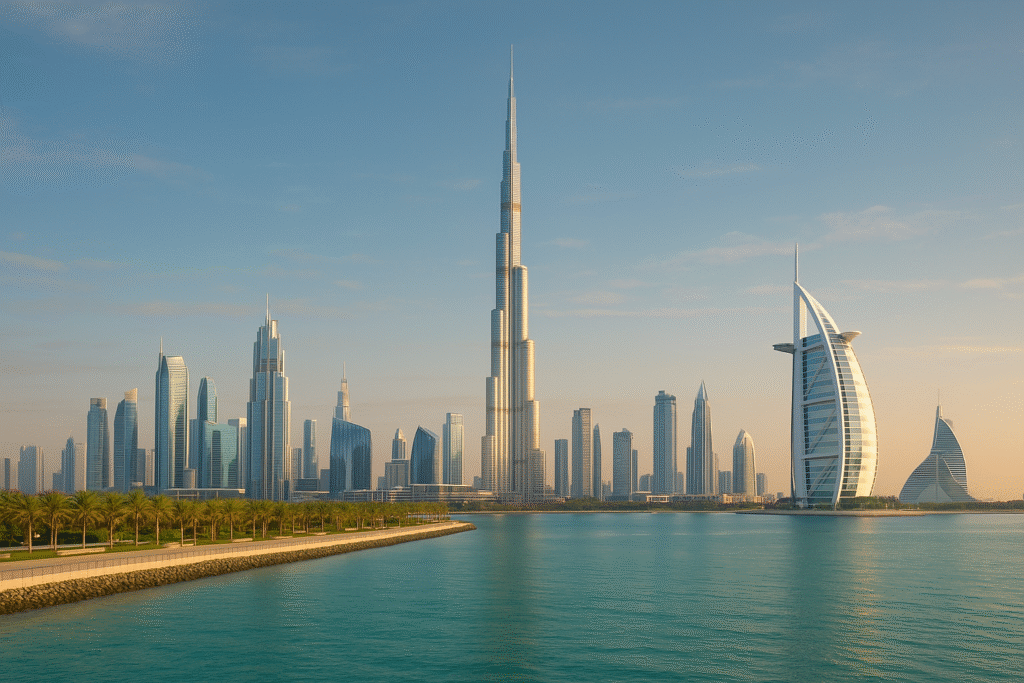
Quality of Life: The Emirates Experience
Dubai consistently ranks among the world’s most liveable cities for expatriates. Year-round sunshine, tax-free salaries, and cultural diversity attract global talent. Safety levels rival the world’s most secure destinations.
Healthcare systems blend international standards with cultural sensitivity. World-class hospitals offer cutting-edge treatments. Medical tourism brings patients from across the region. Insurance systems provide comprehensive coverage.
Education options cater to every community’s needs. International schools follow various curricula. Universities offer globally recognised degrees. Vocational training prepares students for emerging industries. Lifelong learning opportunities abound.
Recreation possibilities seem endless. Beaches offer water sports and relaxation. Mountains provide hiking and adventure activities. Deserts host camping and safari experiences. Urban parks create green oases. Shopping and dining options satisfy every taste.
Public transport connectivity improves constantly. The Dubai Metro links major destinations efficiently. Bus networks reach every neighbourhood. Water taxis cross the Creek traditionally. Future plans include hyperloop connections.
Community spirit flourishes despite rapid change. Neighbourhood associations organise events. Volunteer groups support charitable causes. Sports clubs bring people together. Cultural associations preserve traditions whilst building bridges.
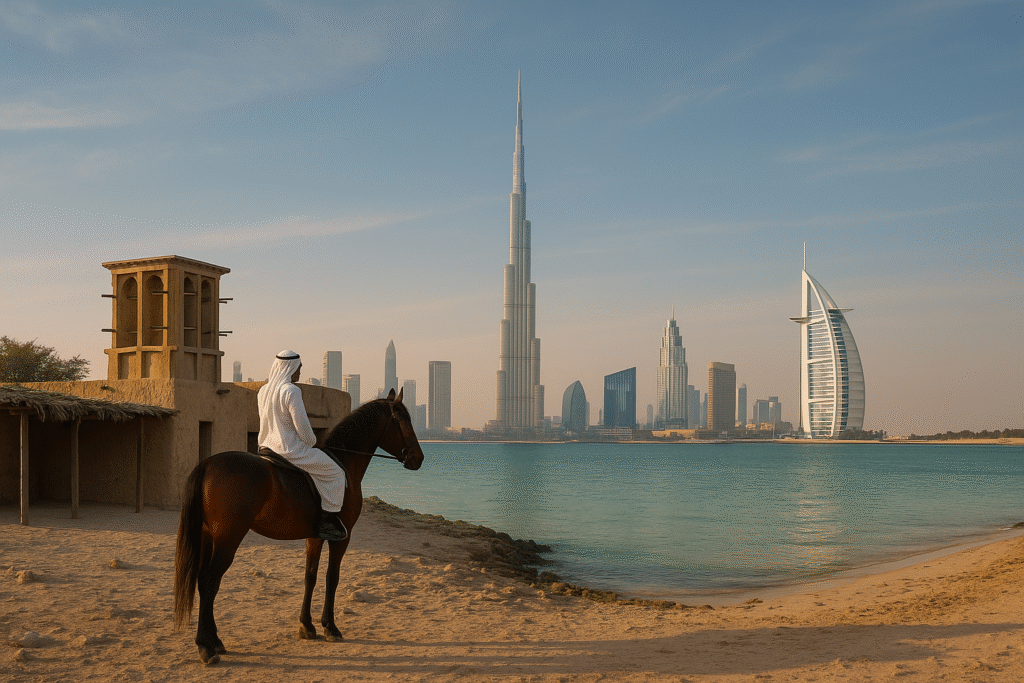
Looking Forward: Dubai 2040 and Beyond
Dubai’s leadership continues planning decades ahead with characteristic vision. The Dubai 2040 Urban Master Plan sets ambitious targets for sustainable growth. Population projections anticipate 5.8 million residents by 2040.
Green space expansion features prominently in future plans. Nature reserves will cover 60% of emirate land. Public parks increase by 400%. Tree-lined streets provide natural cooling. Vertical gardens integrate with architecture.
Transportation revolution promises seamless connectivity. Autonomous vehicles will dominate roads. Hyperloop systems connect emirates. Electric aviation begins commercial operations. Cycling infrastructure encourages healthy transport.
Economic diversification continues accelerating. Space technology industries develop locally. Renewable energy manufacturing begins. Biotechnology clusters emerge. Creative industries receive substantial support. Knowledge economy sectors expand rapidly.
Social development priorities include Emirati workforce development. Education reforms emphasise critical thinking. Entrepreneurship programmes encourage innovation. Women’s participation increases across sectors. Youth engagement shapes future policies.
Environmental sustainability becomes fundamental to all planning. Carbon neutrality targets drive energy transitions. Circular economy principles guide development. Water security requires innovative solutions. Climate adaptation prepares for temperature increases.



